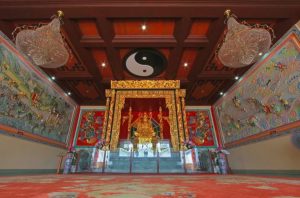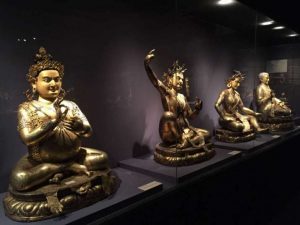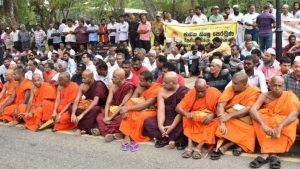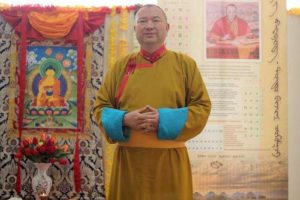Having (very) temporarily moved to New York, I have never felt so detached from the background of Tibetan Buddhism that has always been a strong presence at my home in North West London. In many ways it is perhaps just the right time to start this column, when I myself have been searching for places and communities that feel a little more like home in what can be a very overwhelming city; one where spirituality and humanity don’t necessarily come easy or cheap.
My first point of call was somewhere I’ve been wanting to visit for years, the Rubin Museum of Art, specialising in art from the Himalayan region, primarily Tibetan Buddhist art, but also including Hindu, Bon, Jain, and Sikh art as well as cross-cultural exhibitions, and historical and contemporary photography of the region. Since inception, the museum has expanded in all directions including programs, workshops, special events and regular exhibitions of classical and contemporary Himalayan works alongside the permanent collection.
I was accompanied by a group of individuals involved in the arts field, who were all particularly keen to see the installation of a Tibetan Buddhist shrine room. This was an opportunity to consider the public display of sacred Buddhist imagery, especially containing more tantric or esoteric elements, which were in many cases not intended for open display to the non-initiated.
Despite reading nothing but rave reviews about the installation, my fellow visitors were rather more divided in opinion. Some were extremely apprehensive about the concept and found the inclusion of a sacred space within a secular museum environment to be contested ground. For me, the shrine allowed visitors to re-assess conventional models of displaying religious objects in a manner wholly detached from their functional use. After hearing their thoughts I wondered why the shrine room had sparked so little discussion regarding the responsibilities of a museum to encourage respectful treatment of sacred cultural property and in this specific instance, what it means to collect and exhibit religious and sacred objects connected to living peoples and traditions.
In writing of the Hegelian view of the relationship between art and culture, E.H. Gombrich asserts that “…any creation of a period is connected by a thousand threads with the culture in which it is embedded” (1). If this is the case, that the two are intrinsically linked, it seems fundamental to understand them as a whole. This is very relevant to the display and viewing of Vajrayana Buddhist imagery where depicted symbolisms can appear violent and sexually explicit to the non-initiated, rendering them prone to mis-interpretation and mistaken concepts about the Vajrayana tradition and Buddhism in general. Art is a form of communication just as the written word and if one cannot, or can only partially ‘read’ the visual language of the work, it cannot be fully appreciated or understood. Not doing so can leave the work of art open to misrepresentation and dangerous value-judgements and so in this sense, the Rubin Museums more ‘contextualised’ approach toward Vajrayana imagery could be a progressive step forward from the problematic nature of displaying works in a manner isolated from their original intent.
Alongside sculptures and Tibetan painted thangkas, the exquisitely arranged shrine included a wide selection of ritual implements, furniture, scriptures and textiles that all play a key role in ceremonial practices. The inclusion of religious paraphernalia deliberately avoided the strict separation of the fine arts and those of daily life demonstrating, in the tradition of art historian Ananda K. Coomaraswamy, that there is always a continuity between the values associated with the ‘high arts’ and those associated with the daily life of any given culture (2). The result is a successful educational exhibit of the display of the sacred, helping the visitor feel connected to the objects and culture they are interacting with. What’s more, it seems, judging by the presence of a meditating Buddhist, it can be utilised as a valuable devotional space for some members of the Tibetan Vajrayana community, which is perhaps the greatest compliment.
One could add however, that not only must one understand a work of art within the context and visual-language of the culture that produced it, but also to approach it as best as they can using their own terms of reference. In this sense, one questions the relationship between the museum and the represented group on display and whether the inclusion of the shrine is respectful and inclusive of the culture that it is representing. The main point not necessarily being the presence of the shrine room in itself, but more so the decision to have it ritually blessed, leaving no doubt of its ontological position, to Buddhist practitioners, as a sacred space. Thus activities that would on the most part be unproblematic or less likely to offend in a secular setting, may not make for an ideal setting to house a sanctified space.
Ultimately, the shrine room was undoubtedly an aesthetically striking and engaging exhibit that challenges how Tibetan Vajrayana Buddhism is being presented and received to both Buddhists and non-Buddhists in the city. It suceeded, as it set out to do, in creating an intimate visitor experience with “Tibetan art in context” and delightfully took me back to a little piece of home.
(1) Gombrich, Ernst Hans, “In Search of Cultural History,” Clarendon Press: 1969, p. 229
(2) Martin Jr., James Alfred, “Beauty and Holiness”, Princeton University Press: 1990, p.140
















